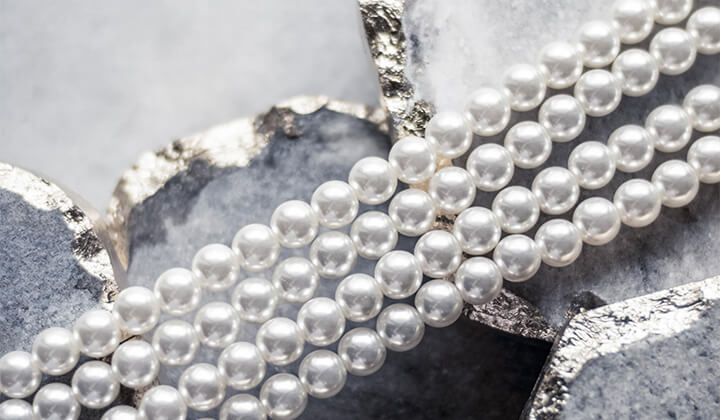Address
304 North Cardinal
St. Dorchester Center, MA 02124
Work Hours
Monday to Friday: 7AM - 7PM
Weekend: 10AM - 5PM
Address
304 North Cardinal
St. Dorchester Center, MA 02124
Work Hours
Monday to Friday: 7AM - 7PM
Weekend: 10AM - 5PM

Overtones alter the primary colour, also known as the body colour, and are most often pink (sometimes spelled rosé), green, purple, and blue. In addition, the iridescent effect known as orientation may be seen in certain pearls.
Bead necklaces, bracelets, earrings, rings, and pendants set with single or paired cultured pearls are all popular accessories. Creative jewellers want larger pearls of interesting forms.
Natural and cultured pearls, alexandrite, and moonstone are June birthstones in the United States.
Pearls formed in nature develop in the mantle tissue of some mollusks, often around a minute irritant and always without any outside intervention.
Cultured pearls can only be grown with the help of a human caregiver. While some wild mollusks are still harvested and utilized, most mollusks used in the culturing process are produced particularly for that reason.
The procedure begins with the skilled technician removing mantle tissue from a sacrificed mollusk of the same species and inserting either a small piece of mantle tissue with a shell bead into the gonad of a host mollusk, or several pieces of mantle tissue without beads into the mantle of the host mollusk.
Cultured pearls are created when the mantle tissue of an oyster develops around a bead, creating a sac that the oyster then uses to deposit nacre into and onto the bead. Without a bead, the nacre grows around the individual pieces of transplanted mantle tissue. After the mollusks are cultivated, the workers will harvest the pearls.
Four main categories of real cultivated pearls exist, and they are:
Most people in the United States and other western markets are acquainted with Akoya cultured pearls, a kind of saltwater cultivated pearl.
Many consumers consider single-strand necklaces with white or cream-coloured Akoya pearls iconic jewellery pieces. Cultured pearls known as Akoya are made in both Japan and China.
These saltwater-farmed pearls come mostly from Australia, Indonesia, and the Philippines. Depending on the oyster they come from, South Sea cultivated pearls may range in colour from white to silver or even golden.
Several reasons contribute to their high value, including their great size and thick nacre, both of which result from their lengthy development time and the fact that there are only a few optimal growing circumstances.
They are growing mostly on French Polynesian islands (the most familiar of these is Tahiti). These black pearls are saltwater cultivated pearls, which come in various colours. Overtones of blue, green, purple, or pink may be seen in all of these colours, as well as others, making them seem grey, black, or brown.
Cultivated freshwater pearls are unrivalled in terms of production volume and popularity among consumers and jewellers. This is because they are commercially available at more affordable prices and come in an astounding variety of sizes, shapes, and colours.
In addition, many pearls may be developed in a single oyster when the process is done in a freshwater environment like a lake or pond. Freshwater-cultivated pearls have traditionally come from China.